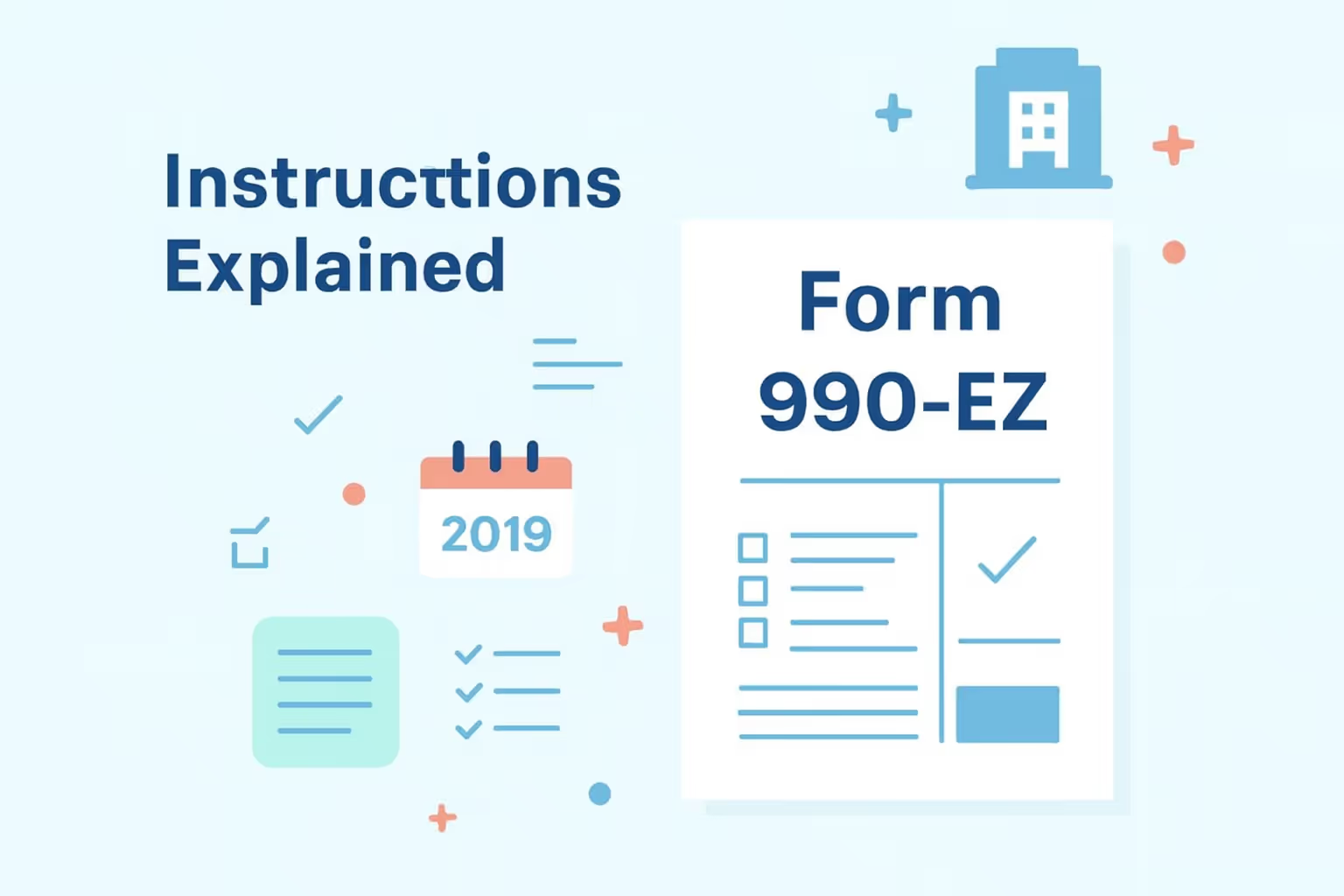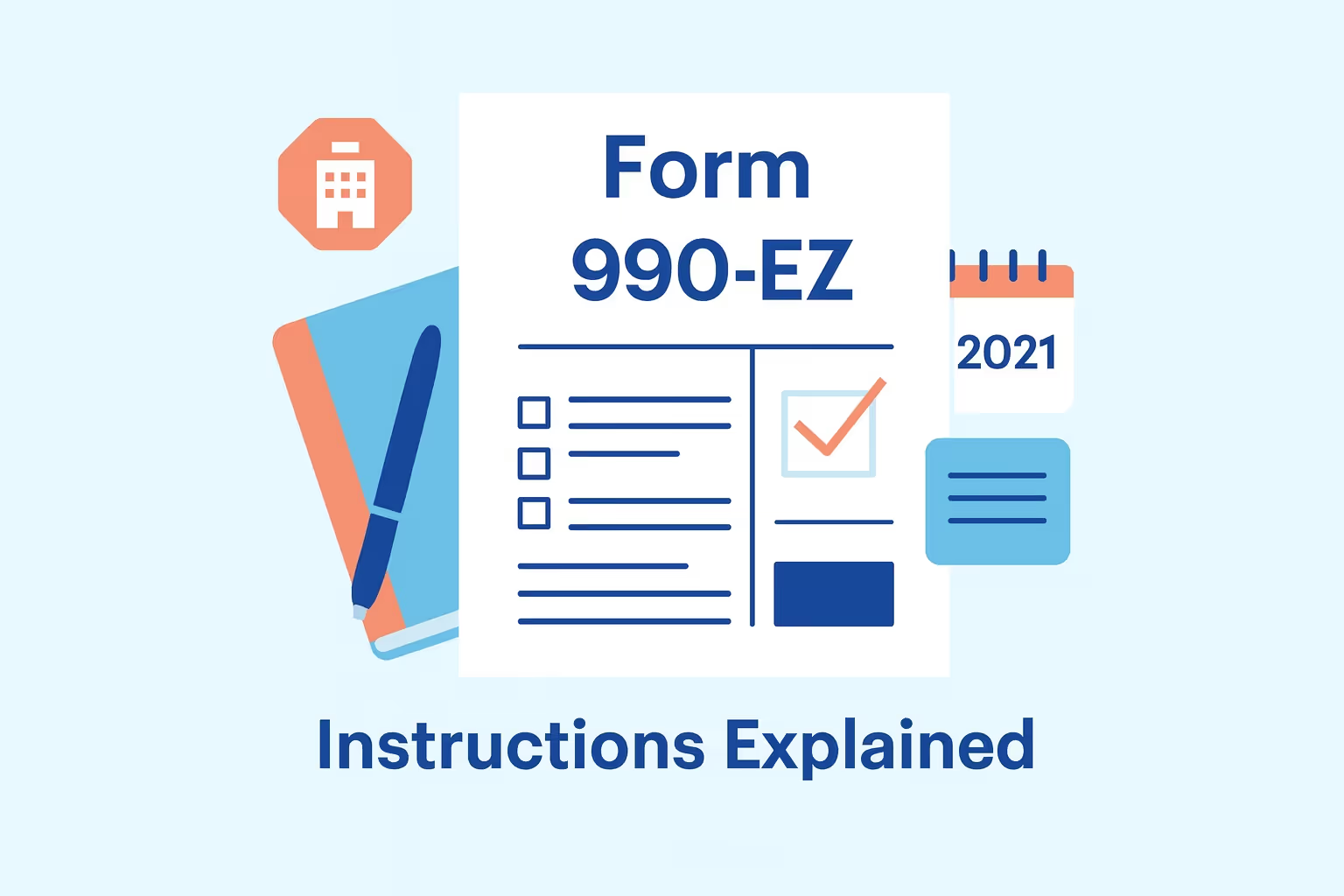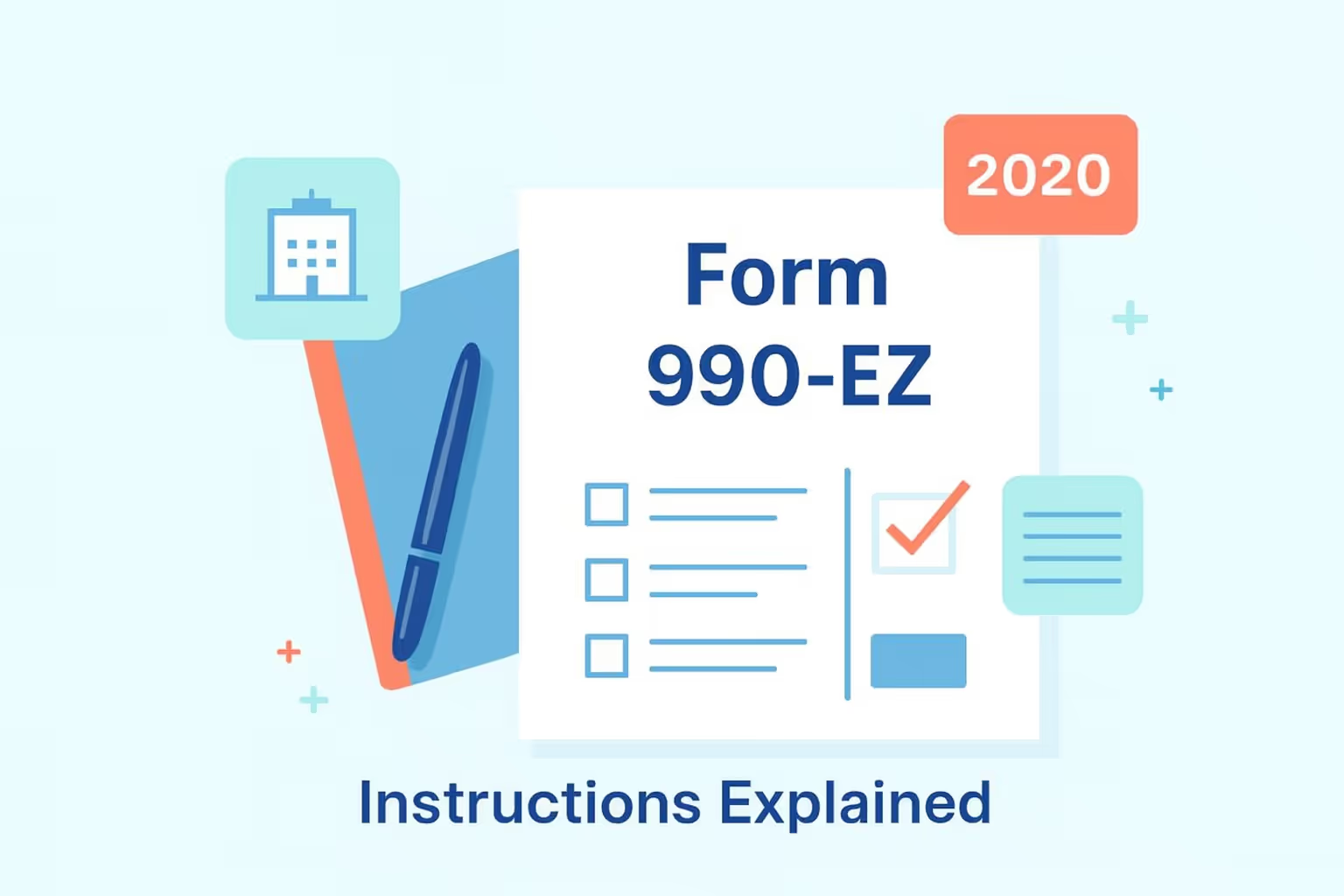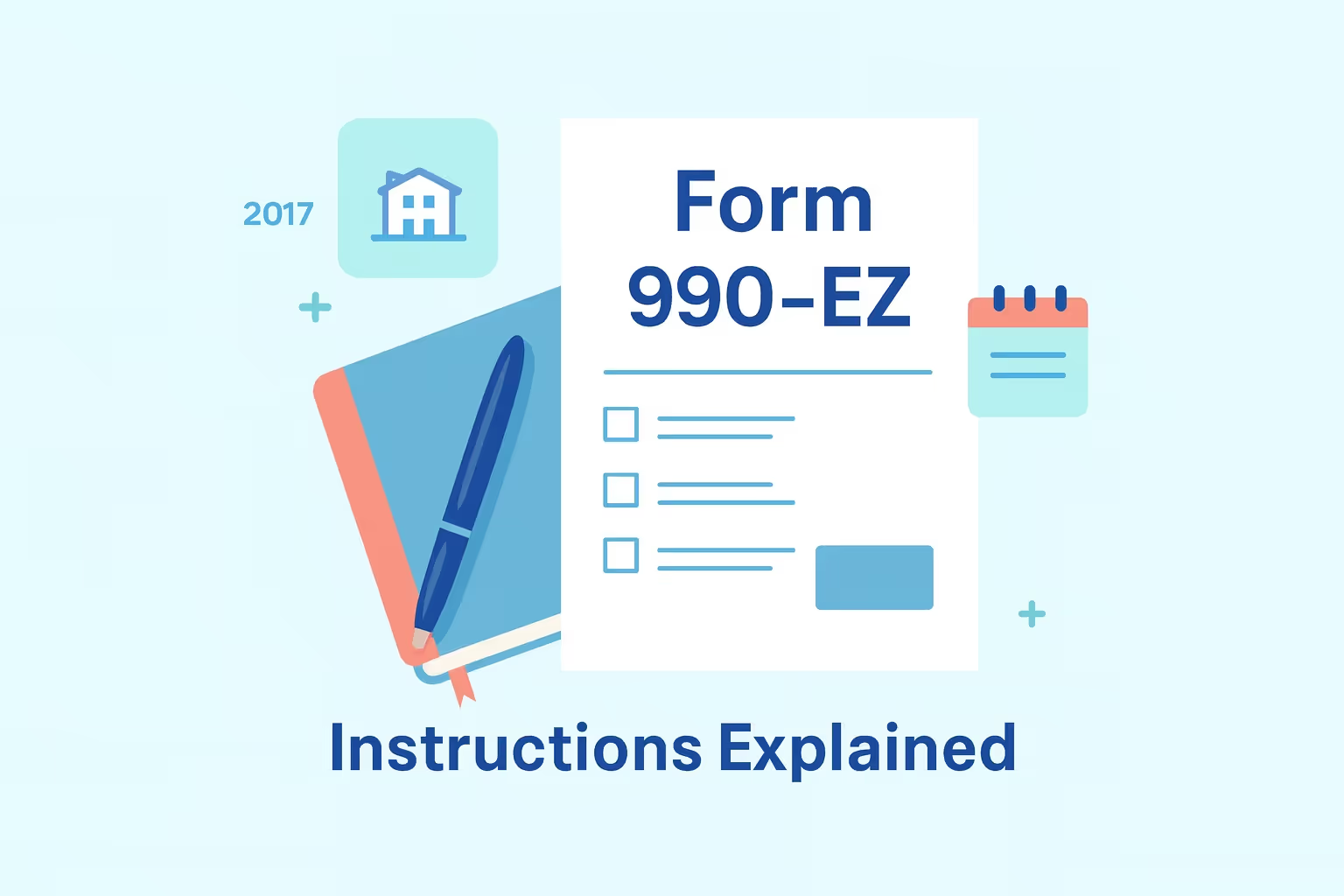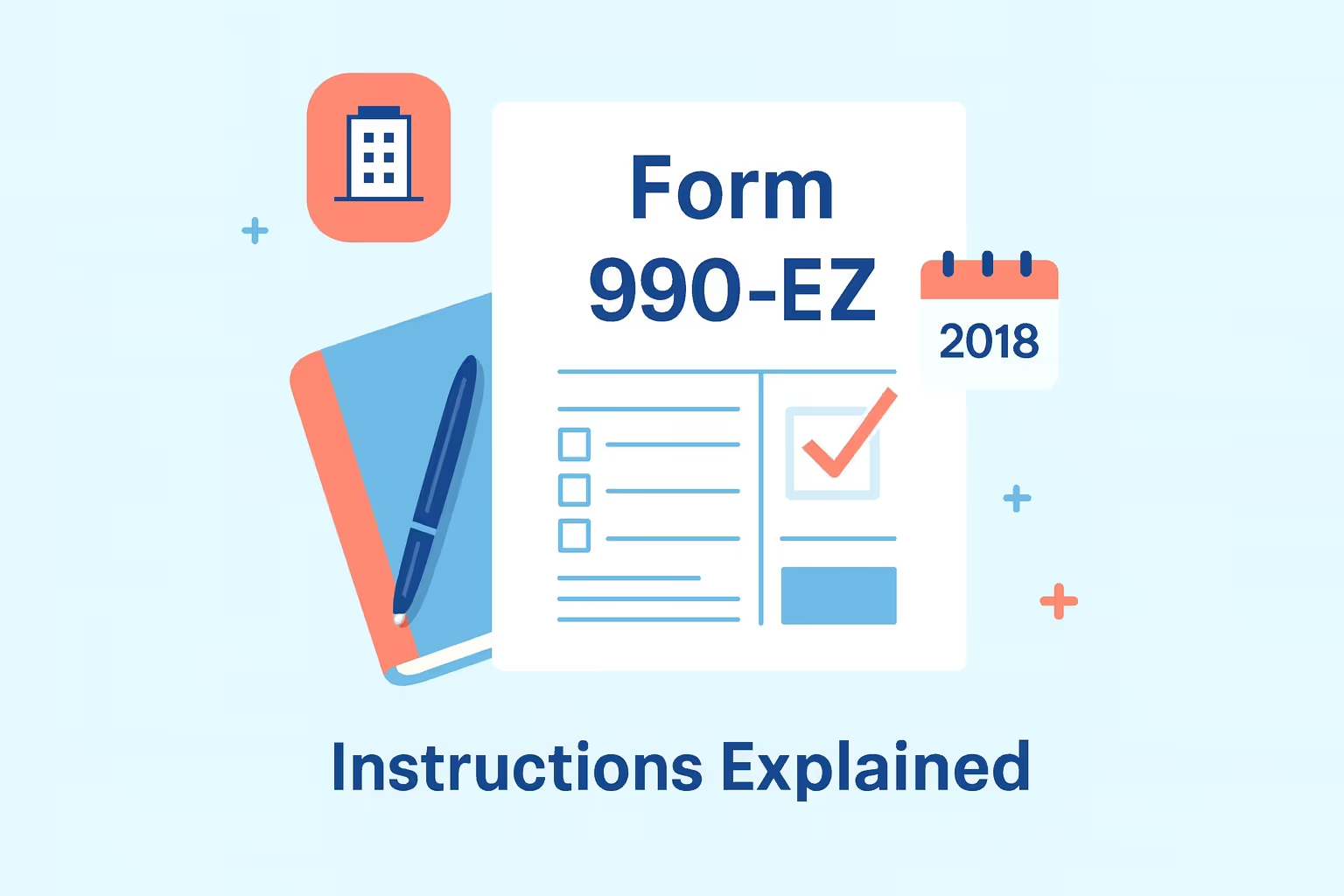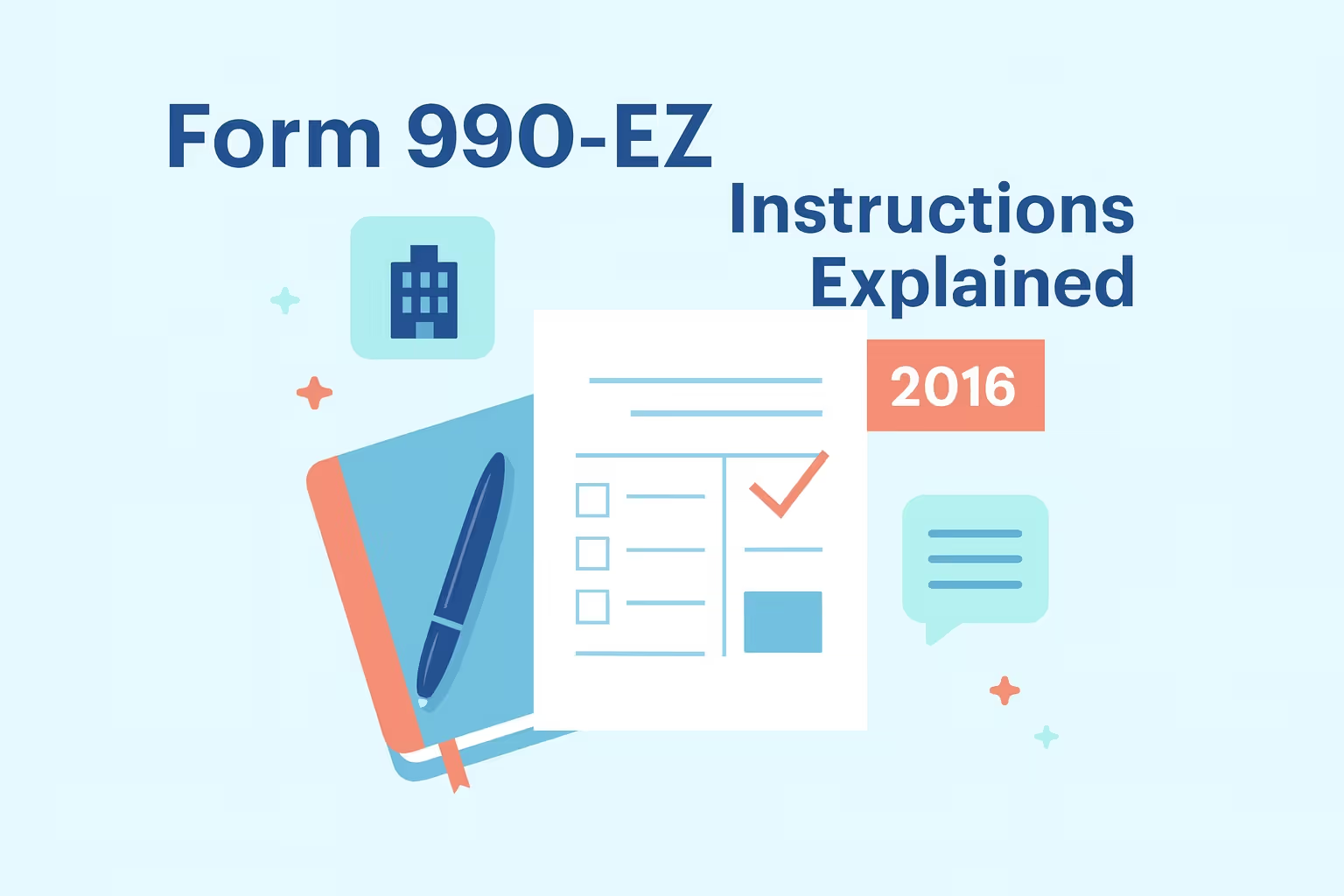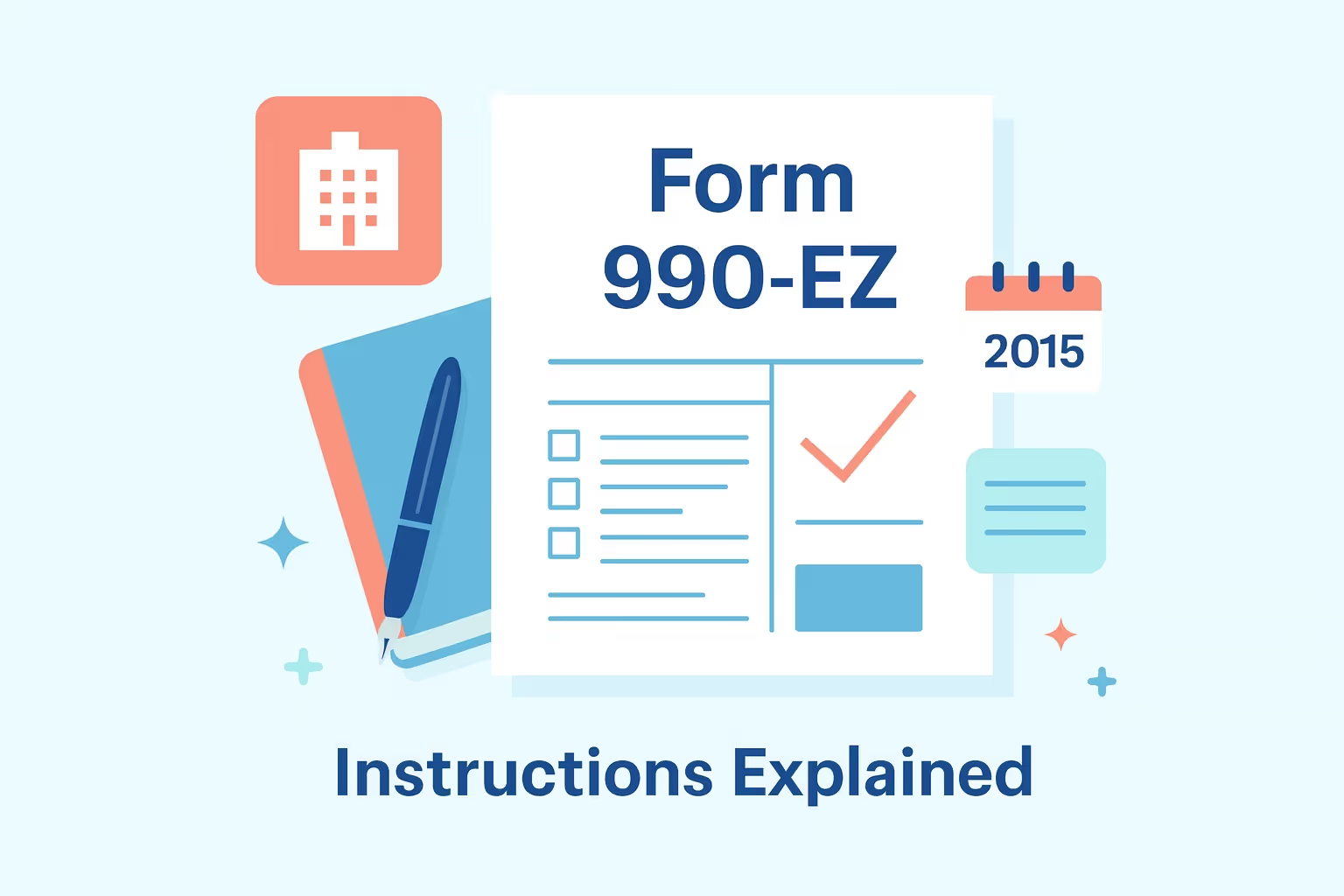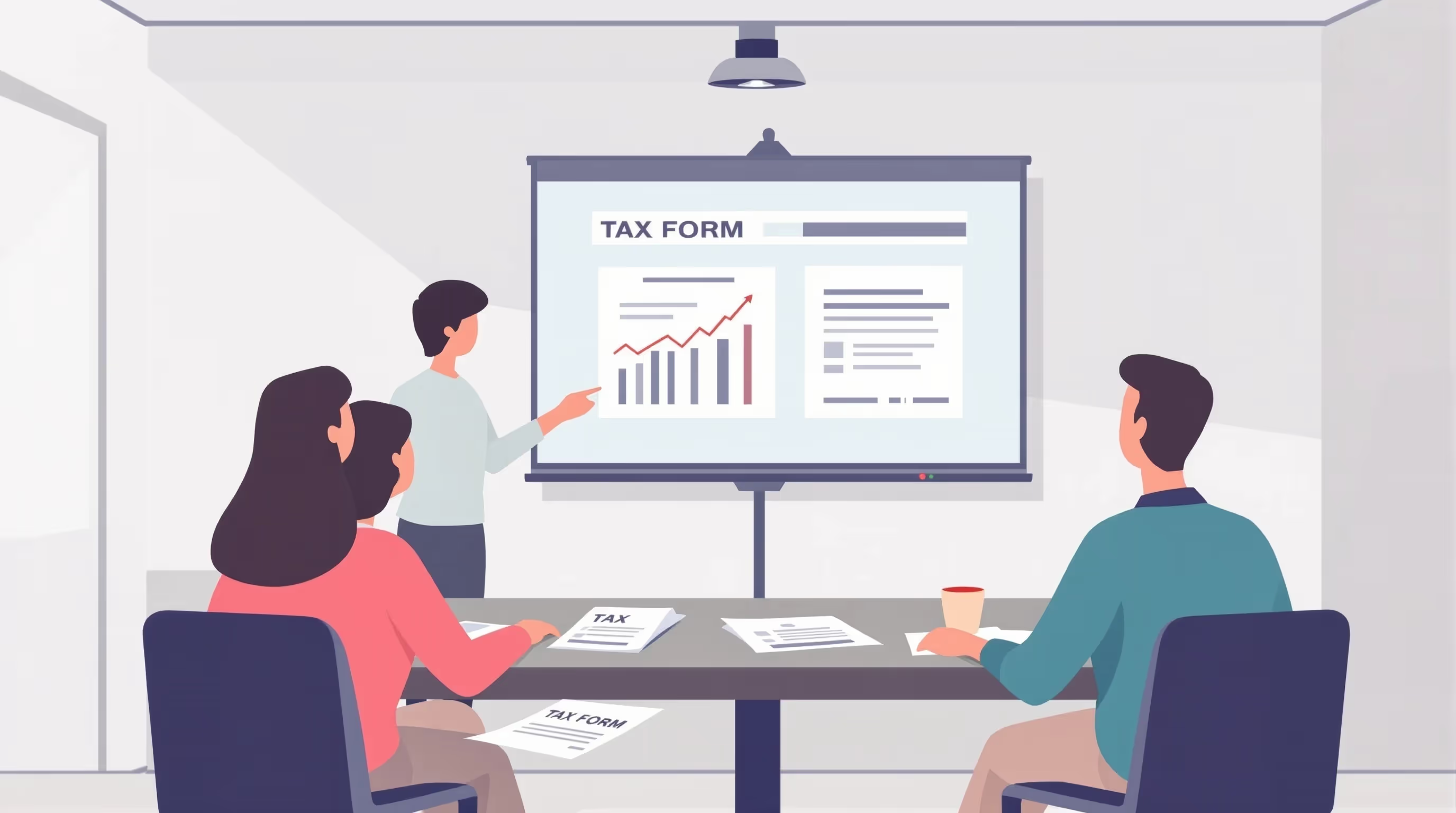
What IRS Form 990-EZ Is For
IRS Form 990-EZ (2020) is a short-form tax return used by smaller tax-exempt organizations, including charities, to report their financial activities to the IRS. It is required for nonprofits with gross receipts under $200,000 and total assets under $500,000. This form helps the IRS in its determination of whether the organization complies with federal tax laws and maintains its tax-exempt status.
Filing this form correctly is crucial to avoiding penalties for late or incomplete submissions. Organizations or individuals who fail to file may incur additional fees. In some cases, nonprofits may need to write a response or contact the IRS. Accurate filings help protect the organization from audits and loss of tax-exempt status, ensuring compliance with all state and federal requirements.
When You’d Use IRS Form 990-EZ
Nonprofits must file IRS Form 990-EZ when their gross receipts are under $200,000 and total assets are below $500,000. The form reports financial activities, estimated tax payments, and tax compliance to the IRS, ensuring the organization maintains its tax-exempt status. Filing this form annually helps demonstrate adherence to federal tax laws and avoid penalties.
In some cases, Form 990-EZ must be filed if a tax return is late or amended. If errors are found or the IRS sends a letter for non-filing, the organization must check and correct the submission. The penalty continues until the correct filing is received, which can reduce further fees.
Key Rules or Details for 2020
For the 2020 tax year, IRS Form 990-EZ has specific rules that organizations must follow. Nonprofits need to include nonemployee compensation and estimated tax payments in their filings. These filings help ensure compliance with federal income tax requirements.
- Refundable credits must be accounted for and reported accurately.
- Nonprofits must meet the required thresholds for gross receipts and assets to qualify for Form 990-EZ.
- If the organization does not meet these thresholds, it must file Form 990 instead.
- The filing deadline is often the 15th day of the 5th month after the end of the fiscal year, typically in October.
By following these rules, nonprofits can avoid unnecessary delays and penalties.
Step-by-Step (High Level)
Filing IRS Form 990-EZ involves several critical steps to ensure compliance with tax laws. Follow the steps below to complete the process accurately:
- Determine eligibility by reviewing the nonprofit’s financials, ensuring gross receipts and total assets meet the required thresholds.
- Gather financial records, including estimated tax payments, nonemployee compensation, and other necessary documents.
- Complete the form by entering all relevant income, assets, and compensation details.
- Ensure an authorized officer signs the form to validate the submission.
- Submit the form either electronically or by mail, ensuring it is sent to the correct IRS address.
By following these steps, organizations can submit Form 990-EZ accurately and avoid penalties.
Common Mistakes and How to Avoid Them
When filing IRS Form 990-EZ, nonprofits must be cautious to avoid mistakes that could lead to penalties or delays. It’s essential to ensure every part of the form is completed accurately to avoid the risk of rejection or additional fees.
- Incomplete forms: Complete all required fields and review the form carefully before submitting to ensure accuracy.
- Incorrect form selection: Make sure you are filing Form 990-EZ if your organization meets the thresholds.
- Missing schedules: Attach all required schedules to ensure compliance.
- Incorrect reporting of nonemployee compensation: This is a common issue and must be reported correctly.
- Late filing: Submit the form on time to avoid penalties and interest.
By carefully reviewing the form and filing promptly, nonprofits can avoid costly errors.
What Happens After You File
After submitting IRS Form 990-EZ, organizations will follow key steps in the process. The IRS typically processes the form within 4–6 weeks, though late or amended returns may take longer. During this time, nonprofits should carefully monitor for any IRS correspondence.
If there are issues with the filing, nonprofits may receive a file penalty notice requesting missing information or corrections. The IRS may send a locked padlock icon or an extension letter if further review is needed.
Failure to address discrepancies can result in penalties. Tracking communications ensures that all questions are answered and the process moves forward, helping to avoid unnecessary delays.
FAQs
What is the minimum penalty for late filing of IRS Form 990-EZ?
The minimum penalty for filing Form 990-EZ late is $20 per day, with a maximum of $10,500 or 5% of the organization’s gross receipts, whichever is less. If your organization is a corporation or has businesses, the penalty could be more significant if gross receipts exceed a certain threshold.
What happens if I owe taxes after filing IRS Form 990-EZ?
If you owe taxes, the IRS will notify you with an official letter indicating the tax required and the amount owed. The IRS may also assess additional penalties if the amount is not paid by the due date or if the payment is late. The pay penalty continues until the correct payment is received.
Can I file an extension for IRS Form 990-EZ?
Yes, nonprofits can file for an extension to delay their due date by up to six months. You must submit Form 8868 before the original filing deadline to ensure the extension is granted. If granted, the extension will help pass through potential filing delays.
How do I calculate the balance due for IRS Form 990-EZ?
To calculate the balance due, review your income tax obligations, estimated tax payments, and any refunds or credits. If there are discrepancies in the form, you may owe additional amounts based on these calculations. Make sure the final balance is shown correctly on the form.
Can I file Form 990-EZ for a partnership or estate?
Form 990-EZ is typically used by tax-exempt corporations, not partnerships or estates. If a partnership or estate is exempt, it must file a different form, such as Form 990, based on its activities and gross receipts. Ensure that the appropriate section is filed for each.
What if I miss the filing deadline for Form 990-EZ?
If you miss the filing due date, you may be charged a filing penalty. The IRS will notify you about the late submission, and if you don’t take action, additional fees may apply, which can increase over time. To avoid such fees, you must pay penalty charges promptly.
How can I find related resources to help with IRS Form 990-EZ?
To find resources and related information, visit the official IRS page dedicated to Form 990-EZ. There, you can find examples, instructions, and FAQs that are directly related to the form, including tax requirements and how to address any issues that may arise. Visit the home page for more resources.
Organizations that require additional nonprofit filing references can use the Federal Fillable Tax Forms and Guides resource hub, which provides access to related federal forms, schedules, and prior-year instructions.
















